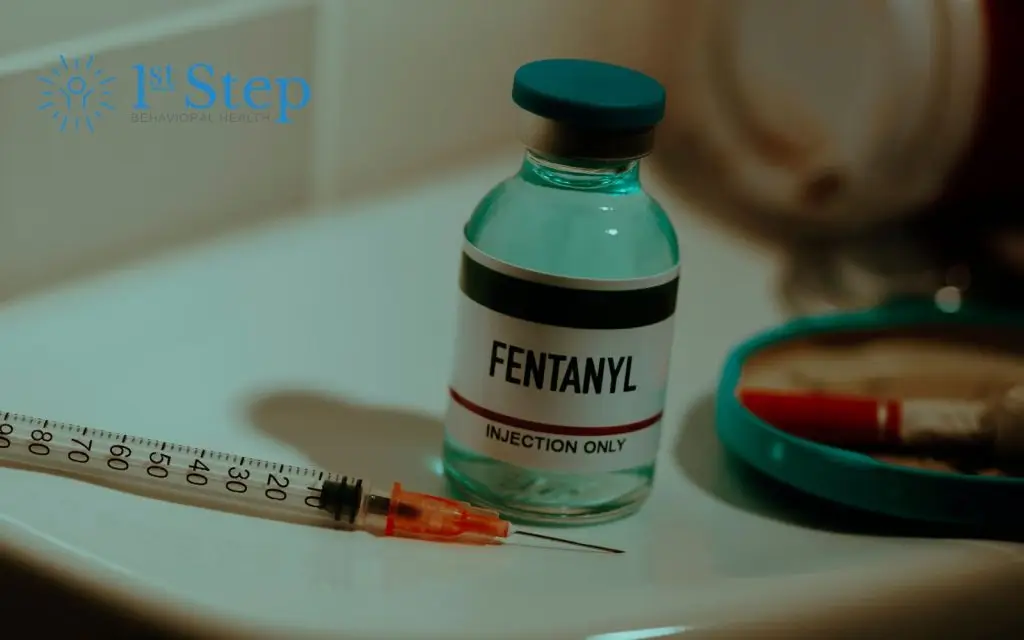Fentanyl is one of the most dangerous drugs in the opioid crisis. Its use is spreading in illegal drugs.
Fentanyl is a strong synthetic opioid. It is often mixed with drugs like heroin or cocaine. This increases the risk of accidental overdoses.
Knowing what fentanyl looks like and smells like is very important. This is crucial for anyone who might touch this substance. This includes users, loved ones, and first responders.
Sadly, people often struggle to recognize what fentanyl looks and smells like. This is especially true when it’s mixed with other drugs.
What is Fentanyl?
Fentanyl is a synthetic opioid first created for medical use. It helps treat severe pain, especially for patients having surgery or dealing with chronic pain. In its medical form, healthcare providers administer fentanyl through patches, injections, or lozenges under strict supervision.
However, people also abuse fentanyl illicitly, and manufacturers often produce it illegally, usually without any regulation or oversight.
The real danger of fentanyl is its extreme strength. It is up to 50 times more potent than heroin and about 100 times stronger than morphine. This potency means that even a tiny amount can cause a fatal overdose.
Drug dealers often mix illicit fentanyl with drugs like heroin, cocaine, or fake prescription pills. This makes it hard to detect without proper testing. Many don’t know when they are consuming fentanyl, and this unsuspecting exposure significantly increases the risk of overdose.
Even tiny amounts of fentanyl can be deadly. Just a few milligrams—roughly the size of a grain of salt—can be lethal.
What Does Fentanyl Look Like?
Fentanyl comes in several forms, making it difficult to identify without testing. It’s often found as a powder, pill, or liquid. Each form has risks of accidental exposure and overdose.
Powdered Fentanyl
This is one of the most common forms of illicit fentanyl. It typically is a fine, white powder, similar in texture to heroin or other powders used in street drugs.
When fentanyl is cut with other substances, its appearance may vary slightly.
However, it can still resemble heroin or other illicit powders, making it difficult for users to tell the difference. People often mix fentanyl in powder form with heroin, increasing the risk of accidental overdose.
Pill Form
Illicit fentanyl is also commonly pressed into pills that resemble prescription medications, such as oxycodone or hydrocodone.
People usually sell these counterfeit pills on the black market, and they often contain fentanyl mixed with other substances. Because they look like legitimate medications, users may not realize they’re taking fentanyl, making these pills particularly dangerous.
People often sell fentanyl-laced pills as “pressed pills,” and without knowing what these pills contain, users may ingest a lethal dose.
Liquid Form
Fentanyl is also available in a liquid form and is often used in medical settings for anesthesia or pain management.
However, people may sell it in vials or mix it with other liquids or drugs in the illicit market. Handling liquid fentanyl poses a special danger because it can be absorbed through the skin.
How to Identify Fentanyl by Taste, Look, and Smell
Identifying fentanyl can be incredibly challenging due to its subtle characteristics. It is often mixed with other substances, making it even harder to distinguish.
Look
Fentanyl is usually a fine white powder. However, people can also mix it with many street drugs. People often hide it to make it look like other substances.
The color and texture of fentanyl can change based on what it is mixed with. This makes it hard to tell it apart from other drugs.
When it’s mixed with heroin, for example, fentanyl might look almost identical to the heroin itself. This is why relying solely on appearance to identify fentanyl can be extremely dangerous.
Test strips or laboratory analyses are the only reliable methods to confirm the presence of fentanyl.
Taste
Identifying fentanyl by taste is not recommended due to the potency of the drug.
Fentanyl is a powerful opioid, and even a small amount can cause fatal overdose. Trying an unknown substance, especially one that might have fentanyl, is very dangerous. It can cause serious health problems or even death.
The risk of exposure through taste makes this method not only unreliable but highly unsafe. Always avoid tasting any drug and seek professional help if you suspect a substance contains fentanyl.
Smell
So, what does fentanyl smell like?
Fentanyl usually has no smell or a weak chemical scent. This makes it very hard to detect by smell alone. This lack of a strong odor is one of the key reasons fentanyl is so dangerous.
Users may not realize they’re consuming fentanyl-laced drugs because there is no noticeable scent to warn them.
Why Relying on Sight, Taste, or Smell is Not Safe
You should never use sight, taste, or smell to identify fentanyl. Even small amounts can cause serious harm or death.
The safest and most reliable way to find fentanyl in any substance is through testing. You can use fentanyl test strips or laboratory analysis.
If you suspect that a drug may contain fentanyl, always exercise caution. Avoid using untested substances, and seek immediate help if you or someone you know gets exposed to fentanyl.
The Risks of Fentanyl-Laced Drugs
Drug dealers frequently cut fentanyl into street drugs to increase potency, but this practice is extremely dangerous. Fentanyl is much stronger than heroin or cocaine. Users might not realize they are taking it. This puts them at a very high risk of overdose.
Since it can be up to 100 times more potent than morphine, just a small amount can cause breathing problems. This can lead to unconsciousness and, in many cases, death.
When this happens, it’s always a medical emergency. Even if you have naloxone, you should call 911 to help reduce the effects.
Overdose from fentanyl can happen very quickly. Because it acts rapidly on the brain’s opioid receptors, it can cause a person to stop breathing within minutes of use.
That said, swift intervention can reverse a fentanyl overdose.
Naloxone, also known as Narcan, is a medicine that can reverse an opioid overdose. This includes overdoses caused by fentanyl. It’s available as a convenient nasal spray. If administered promptly, naloxone can save a life. This is why it’s crucial to have naloxone on hand for anyone who may be at risk of fentanyl exposure.
Treatment for Fentanyl Addiction
If you suspect you or a loved one is dealing with fentanyl addiction, don’t wait. Reach out for help today.
First Step Behavioral Health provides complete treatment options for fentanyl addiction. We’re here to help you through each step of recovery.
References:
- National Institute on Drug Abuse (NIDA): Fentanyl DrugFacts
- Department of Family Services: Fentanyl and Fake Pills – Helping Families and Children Get Smart and Be Safe
Jump to a Section
Call (855) 425-4846
